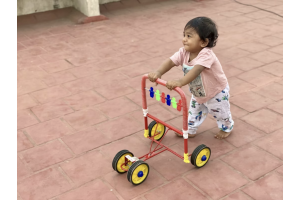Managing Kitchen Upgrades During the First Year of Baby’s Life

The arrival of a baby brings countless joys and a whirlwind of changes that can be overwhelming for new parents. During this first year, many couples find themselves reevaluating their living spaces, particularly the kitchen, to accommodate their new lifestyle. Safety, functionality, and ease of cleaning become paramount as parents navigate the exciting yet chaotic early months of parenthood. Upgrading your kitchen can enhance daily routines, providing a more efficient space for meal prep and family bonding.
Assessing Your Current Kitchen Layout
Before embarking on significant upgrades, evaluate your kitchen's current layout. Identifying the areas that fall short in functionality can help guide your decisions. Pay attention to movement flow, storage solutions, and how the kitchen interacts with the rest of your home. Is the space conducive to having another adult or caretaker help you during busy cooking times? Look for bottlenecks where two people cannot easily work side by side without interruptions.
Consider the placement of major appliances and how easily they can be accessed with a baby in your arms or while managing a toddler's needs. Understanding your kitchen layout will allow you to prioritize upgrades that improve efficiency. Even minor changes can optimize space, relieving stress as you accommodate new routines.
Prioritizing Safety Features
Your kitchen will be a bustling hub of activity, especially as your child grows. Prioritizing safety features during upgrades is important. Focus on minimizing sharp edges, improving lighting, and ensuring secure storage solutions for hazardous materials. Childproofing cabinets and drawers will be critical, as little hands are naturally curious. Installing latches or choosing cabinets with soft-close technology will protect both your child and the integrity of your cabinetry.
While you are choosing upgrades, consider incorporating features like rounded countertops and slip-resistant flooring. These aspects contribute to safety and to the ease of maintenance when spills inevitably occur. It’s worthwhile to create a kitchen environment where safety is prioritized, allowing you to cook without constantly worrying about your little one’s well-being.
Storage Solutions for Baby Gear
With a new baby comes a plethora of gear that quickly fills your living space, often taking over important areas in the kitchen. As you explore upgrades, think about innovative storage solutions that can help you organize baby items efficiently. Consider installing multi-functional cabinets or shelving units that can accommodate baby supplies without compromising kitchen aesthetics. You can easily access diapers, bottles, and snacks by situating them all near.
Open shelving can be a practical choice, allowing you to display frequently used items while creating an inviting ambiance. Considering options like stylish and functional kitchen cabinets is important for integrating your baby’s necessities with your kitchen decor. By keeping baby supplies organized and easily accessible, you create a functional environment that supports both culinary endeavors and caregiving duties.
Choosing Durable Materials
The first year with a baby can be unpredictable, making it important to select durable materials for your kitchen upgrades. Resistance to stains, scratches, and wear will be crucial, as children often create messes and accidents are bound to happen. When selecting countertops, opt for materials like quartz or granite, which are both resilient and easy to clean. Consider soft-close drawers and cabinetry that won’t chip or fade with daily use.
Selecting appliances that withstand heavy use will streamline kitchen tasks. Investing in durable materials may have a higher upfront cost, but can lead to significant time savings and ease of care in the long run. Deliberating on these choices ensures your kitchen stands the test of time amid the daily whirlwind of parenting.
Implementing Efficient Workflow
Creating an efficient workflow can revolutionize your daily cooking process, making meal preparation smoother even amidst the demands of parenting. Map out your cooking routine and identify key tasks that can be optimized. Rearranging frequently used items within arm's reach can minimize the time spent moving around the kitchen. Consider the "kitchen work triangle" concept, which highlights the ideal distances between the sink, stove, and refrigerator.
Ensuring these critical areas are strategically placed can enhance productivity. Meal planning can contribute to efficiency. Organizing grocery lists and prepping meals in batches saves valuable time during busy weekdays. This structured approach allows you to focus more on your child while ensuring that family meals remain a priority in the bustling kitchen environment.
Budgeting for Upgrades
Managing finances can be tricky with a new baby, so careful budgeting for kitchen upgrades is important. Calculate how much you can realistically allocate for renovations without straining your finances. You might consider installing upgrades in phases based on priority, starting with those that address immediate needs for safety or efficiency.
Researching deals on materials and appliances can help you stay within budget while achieving your desired outcome. Other options include taking on DIY projects to save money. Local home improvement stores may offer workshops or materials to assist in smaller renovations.
Upgrading your kitchen during the first year of parenthood can feel overwhelming at times. Implementing thoughtful changes can lead to a harmonious space that meets both culinary and safety needs. Prioritizing layout, safety, storage, materials, efficiency, budgeting, and adaptability will set the stage for many enjoyable family moments ahead. By focusing on these areas, you can transform your kitchen into a nurturing environment that successfully accommodates your family’s evolving lifestyle.






